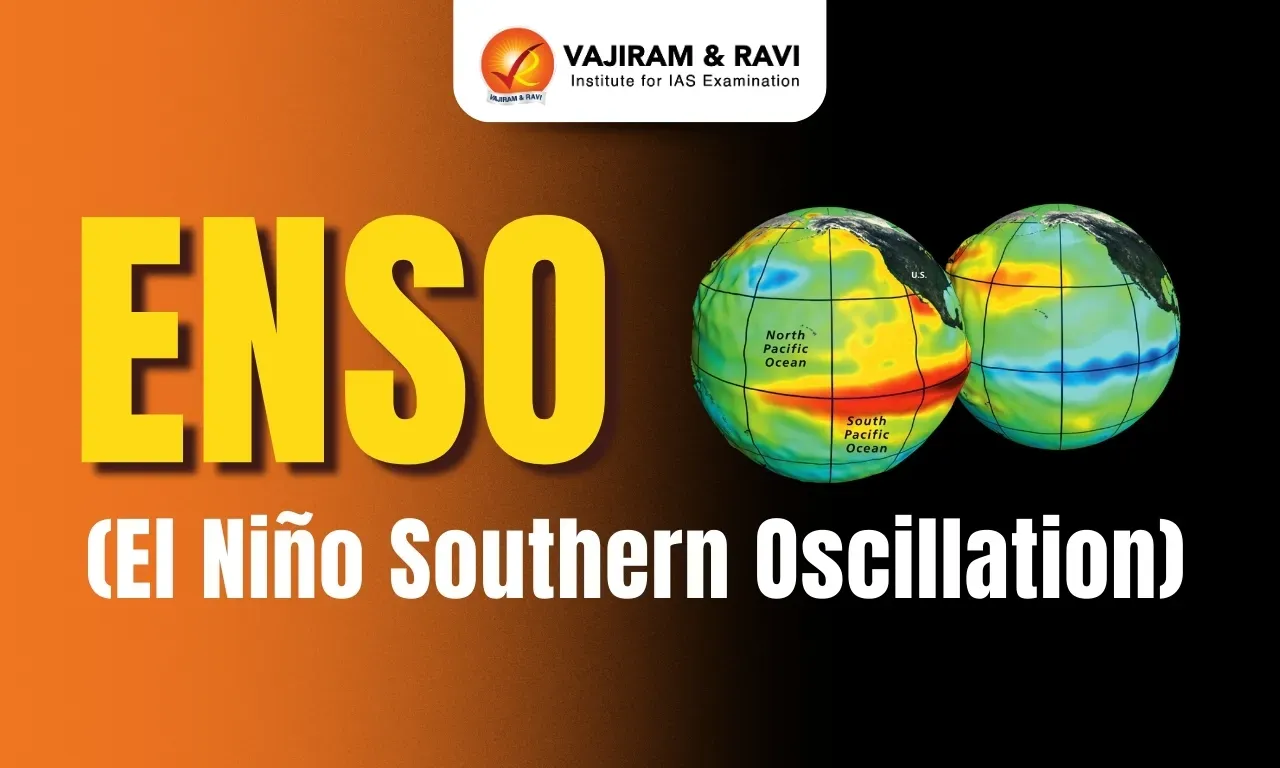El Niño Southern Oscillation (ENSO)
12-04-2025
07:32 AM

El Niño Southern Oscillation (ENSO) Latest News
The recent La Niña event in the tropical Pacific Ocean has officially ended, with the climate system now transitioning to ENSO-neutral conditions as confirmed by the National Oceanic and Atmospheric Administration (NOAA).

Key Points about ENSO and its Phases
- El Niño Southern Oscillation (ENSO): ENSO is a significant climate phenomenon that involves changes in sea-surface temperatures (SST) in the central and eastern tropical Pacific Ocean.
- It affects various global weather patterns, including wind behavior, atmospheric pressure, and rainfall distribution.
- El Niño: Warmer-than-usual sea surface temperatures associated with unusual global warming patterns.
- La Niña: Cooler-than-usual sea surface temperatures often linked with colder atmospheric patterns and stronger trade winds.
- ENSO-Neutral: Neither El Niño nor La Niña dominates the climate system, making forecasts less certain but often acting as a transitional phase between the two extreme conditions.
ENSO-Neutral Phase
- The ENSO-neutral phase is typically seen as a transition period between El Niño and La Niña.
- In March 2025, NOAA scientists observed that SST anomalies in the Niño-3.4 region had reached -0.01°C, much warmer than the La Niña threshold of -0.5°C.
- The cool waters that had characterized La Niña in previous months have now faded.
- Despite the presence of some La Niña-like atmospheric conditions (like strong trade winds), the lack of cool SSTs has led to the declaration of ENSO-neutral conditions.
- Temperature and Atmospheric Changes: The shift to neutral conditions occurred as warm waters spread westward across the eastern Pacific. Simultaneously, the pool of cool water beneath the surface began to shrink.
- Although signs of La Niña (like strong trade winds) persisted for a short time, the absence of cold surface waters meant the system no longer met the criteria to be classified as La Niña.
El Niño Southern Oscillation (ENSO) FAQs
Q1. What is ENSO’s impact on India’s monsoon?
Ans. El Niño weakens monsoon rains (e.g., 2023 saw 94% of average rainfall), while La Niña enhances it (2022: 106%).
Q2. How does ENSO affect global agriculture?
Ans. El Niño triggers droughts in Australia/SE Asia but floods in South America. The 2023-24 El Niño reduced India’s wheat output by 5%.
Q3. What is the “Walker Circulation”?
Ans. A Pacific air-current system disrupted during ENSO events, altering trade winds and ocean upwelling.
Q4. How is climate change affecting ENSO?
Ans. Studies suggest increased frequency of extreme El Niño events (from once every 20 to 10 years) due to warmer Pacific waters.
Q5. What is the Indian Ocean Dipole’s (IOD) role?
Ans. A positive IOD (warm western Indian Ocean) can offset El Niño’s monsoon impact, as seen in 2019.
Source: DTE
